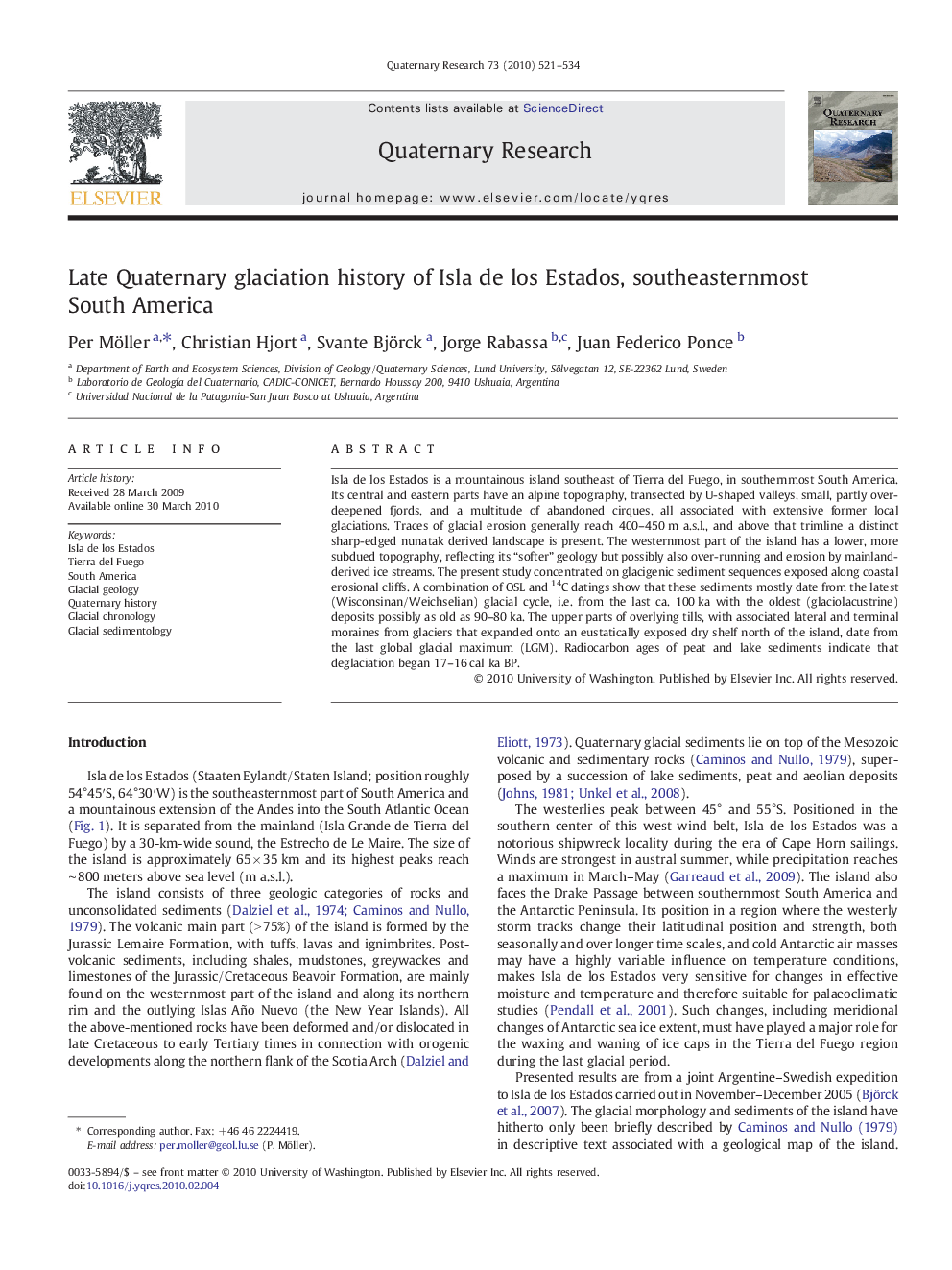| کد مقاله | کد نشریه | سال انتشار | مقاله انگلیسی | نسخه تمام متن |
|---|---|---|---|---|
| 1045927 | 944843 | 2010 | 14 صفحه PDF | دانلود رایگان |

Isla de los Estados is a mountainous island southeast of Tierra del Fuego, in southernmost South America. Its central and eastern parts have an alpine topography, transected by U-shaped valleys, small, partly over-deepened fjords, and a multitude of abandoned cirques, all associated with extensive former local glaciations. Traces of glacial erosion generally reach 400–450 m a.s.l., and above that trimline a distinct sharp-edged nunatak derived landscape is present. The westernmost part of the island has a lower, more subdued topography, reflecting its “softer” geology but possibly also over-running and erosion by mainland-derived ice streams. The present study concentrated on glacigenic sediment sequences exposed along coastal erosional cliffs. A combination of OSL and 14C datings show that these sediments mostly date from the latest (Wisconsinan/Weichselian) glacial cycle, i.e. from the last ca. 100 ka with the oldest (glaciolacustrine) deposits possibly as old as 90–80 ka. The upper parts of overlying tills, with associated lateral and terminal moraines from glaciers that expanded onto an eustatically exposed dry shelf north of the island, date from the last global glacial maximum (LGM). Radiocarbon ages of peat and lake sediments indicate that deglaciation began 17–16 cal ka BP.
Journal: Quaternary Research - Volume 73, Issue 3, May 2010, Pages 521–534